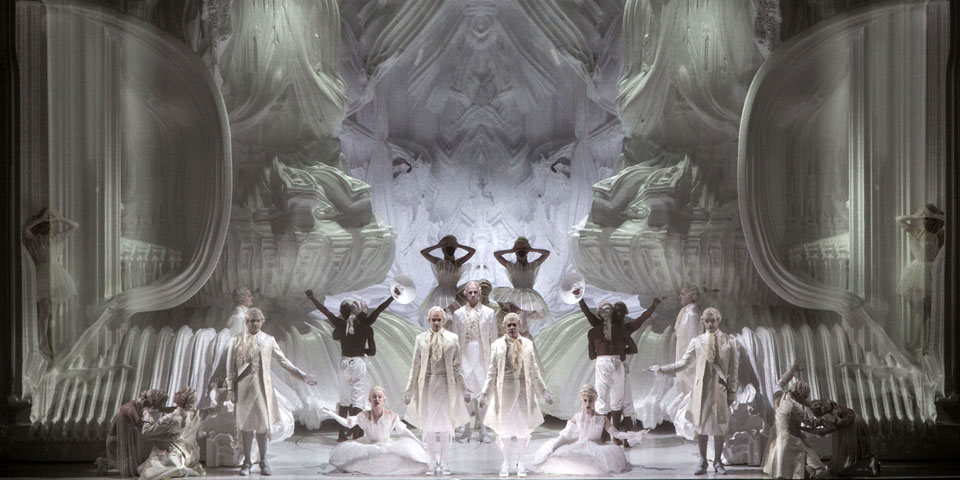The project Zauberflöte is a massive architectural feat from generative artist Michael Hansmeyer. He created it as set design for Romoeo Castellucci’s production of Mozart’s Magic Flute for the La Monnaie theater in Brussels. The first thing I admire about it and that anyone notices, is the scope. The structure is massive and consumes the entire stage. The detail of the sculpture is intense, and I truly can’t comprehend how many tiny details that would never be seen from the audience were included in this piece. I also admire the way it fits with the show, the Magic Flute.

Hansmeyer uses CAD software and algorithmic architecture techniques. For the Zauberflöte grotto, the algorithm was used to create something that appeared both synthetic and organic using a generative subdivision algorithm. There is a simple input form that is divided into smaller surfaces over and over again. By altering division rations, Hansmeyer and his team can create very complex geometric surfaces.
Hansmeyer often asks himself “what is the origin of the forms that we design?” and “what kind of forms could we design if we could free ourselves from our experience?” He uses computational design to find these unseen forms to create something no human could think of. His artistic sensibilities are centered around exploration and a deviation from the tradition, and that’s why he uses the generative subdivision algorithm to create shapes that are seemingly irrational.
![[OLD FALL 2020] 15-104 • Introduction to Computing for Creative Practice](https://courses.ideate.cmu.edu/15-104/f2020/wp-content/uploads/2021/09/stop-banner.png)